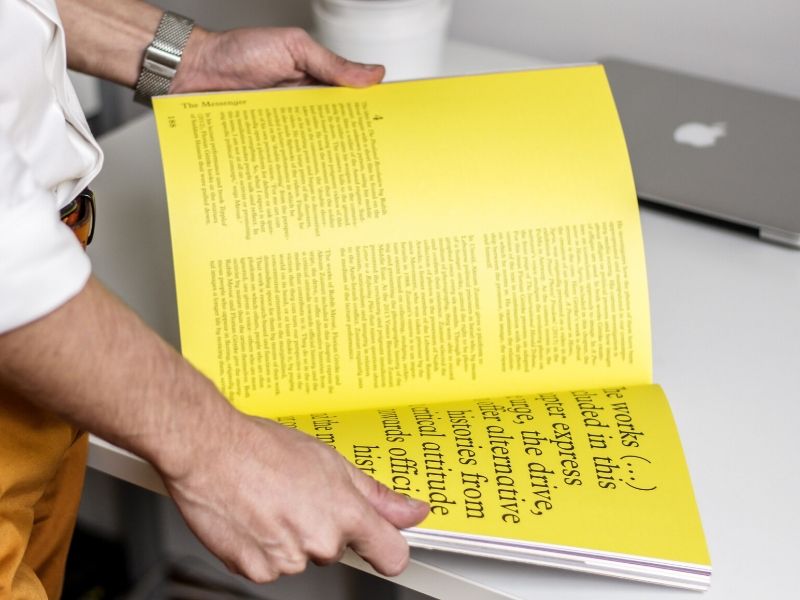This is a guest post by Rachel Smith of Rachel’s List.
You’ve got an amazing small business. A beautiful website. Glowing testimonials from a handful of raving fans (not just your mum). And a belief that you could make more money, find more customers … if you could just reach them.
Sound familiar? You’re in good company. There are pretty much millions of small businesses out there keen to find more customers – but aren’t sure how to go about it.
So I’m going to share with you some tips for getting noticed by journos and editors, and getting media coverage in print and digital outlets.
1. Look the part
A great business, product or service is obviously essential, but don’t underestimate the need for a professional look’n’feel, either (that logo you designed in Canva ain’t going to cut it).
Your brand identity should extend to your packaging, website and copy, so hiring a photographer to take beautiful shots you can supply to media or engaging a copywriter to give your website a professional spit’n’polish can all help pique a journo’s interest.
You’ll also want to choose the face of your company carefully, says Emma Lovell, Personal Branding Specialist at Lovelly Communications. “Media outlets will always prefer to hear about personal stories and individuals than a business or organisation. To gain more publicity, put the owner, CEO or a key person in the business out into the world and show off their personality – think Richard Branson.
“People want to connect with people, so if they feel a connection to your business it can really attract media opportunities. You might also want to hire someone to do media training to guide the ‘face’ of the company about how to present themselves, or conduct great media interviews – that can be really beneficial for your PR campaign, too.”
2. Know your market
You’re much more likely to snap up media coverage in a magazine or digital outlet if your product/service has wow factor, or there’s a fantastic yarn behind your business. But it’s crucial you do your research first, says senior editor Lisa Sinclair, from Bauer Media.
“Relevancy is really important – if you thought your product or business would be good for a certain magazine but you haven’t actually looked at the mag, that’s going to come across. And if you’re pitching a wrinkle cream for 50-somethings to a magazine for young women that’ll just waste your time and theirs.”
If you’re pitching a product in the hopes of a write-up, make sure you know which section it’s suitable for, and give the editor a reason to run it. “Is it new, exciting, trend-driven?” she says. “Similarly, if it’s a story about you or your business – for example, say your child had such bad eczema that you invented your own eczema soap – that back story is essential.”
3. Approach the right person
To get your business into magazines, chances are, you already know which outlets you want to appear in. But what if, say, the magazine you want to approach doesn’t list emails for the editors – and just has a generic contact email in the masthead?
Don’t use the generic email (your message will shoot into the ether, to be discovered by the magazine’s intern five years from now).
Instead try email-finding tool Hunter (you get 50 free searches per month) to find the direct addresses of the editors you need to target.
Editors and budgets are super squeezed these days, so sending it to the right editor and making it easy for them to consider you for possible coverage is important, says Sinclair. “Find out who the section editor is, and make sure your approach is well-written – we get so much stuff that’s badly written we can’t make out what they’re trying to say.”
Not overwhelming a time-poor editor is also key, so think about how your email will look in someone’s inbox, she adds.
“Don’t overload it with info. Keep it simple. No funky fonts. If you’re hoping for product placement, supply good imagery; they won’t do that for you.
“Above all, keep it professional – PR companies exist for a reason and you’re going to struggle to get media coverage if you come across as anything less than super professional.”
4. Hang out where the journos are
There are thousands of journalists in Australia right now, working on existing stories – and they want to hear from brands that have products and services that are new, hip, incredibly useful and yes, have a great story to tell. How to talk to them? Sign up to sites like SourceBottle or Media Connections and you’ll be emailed requests from journalists about stories they’re working on.
You can reply to them with a pitch about your product or service, but here’s my tip: ONLY pitch a journalist on one of these platforms if your brand truly aligns with the story they’re currently writing, or you’ll just waste their time and piss them off.
It also looks extremely amateurish to pitch a journo with a story about your Thai cooking retreat when they’re looking to hear from brands that produce organic make-up. There are other channels to get that story to them… like in the tip below.
5. If all else fails, budget for a PR campaign
If you have a great business but you can’t write to save yourself, have no idea how to reach the right editors or are just too busy to figure it all out, consider outsourcing some or all of your PR. Even with a modest budget, you can engage a freelance PR to write a newsworthy media release that will grab a journo’s attention, or put it in front of the right media.
Doing so can be worth every cent, says Claire Chow from Happy Buddha Retreats, which recently hired a freelance PR. “We knew we didn’t have the publishing contacts, skillset or knowledge on how to approach PR, so a freelance consultant who understood our brand was key – and the outcome has been fab,” says Chow.
“We’ve had articles in Australian Traveller, Australian Yoga Journal, Timeout Magazine, Mindfood and various other travel/foodie digital blogs. It’s also meant any journalists or bloggers approaching us now directly deal with our PR consultant, cutting down on the time spent on this type of communication.”
About Rachel Smith
Rachel Smith is a journalist and copywriter. She’s also the founder of Rachel’s List: a jobs board for creatives in media, digital, PR and comms. Rachel likes making words behave and has to restrain herself not to correct typos in restaurant menus. Her spare time is spent hanging out with her opinionated kid and gazing longingly at the ever-growing pile of books she never gets to read. If you need to outsource PR, copy, design or other creative tasks to a talented freelancer, post a job or short gig at rachelslist.com.au





